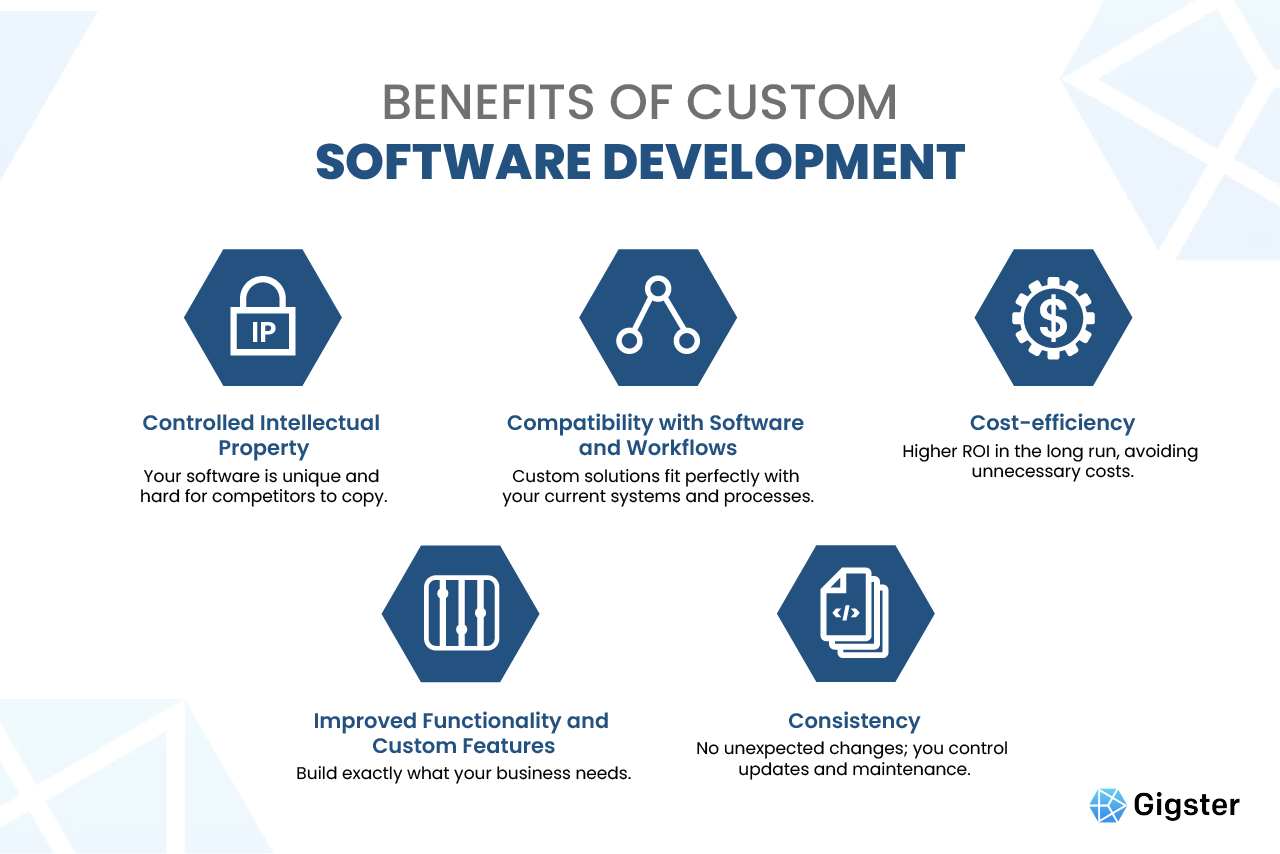
Whenever an organization turns to technology to solve a business problem or seize a new opportunity, the question arises: should you develop custom software or use an out-of-the-box solution?
Companies looking to gain a competitive advantage are increasingly turning to custom software to meet specific business needs and maintain greater control over their technology. The custom software development market reached $28.2 billion in 2022 with an estimated CAGR of 21.5% between 2023 and 2032. This growth highlights the increasing importance of tailored solutions.
However, custom software development isn’t ideal for every situation. Read on to learn the differences between custom software and off-the-shelf solutions and to decide which is right for your development project.
What is Custom Software Development?
Custom software development entails the conceptualization, creation, and ongoing maintenance of a unique software product tailored to fulfill the specific requirements of a company or project. While off-the-shelf or out-of-the-box software provides a one-size-fits-all solution, custom software development can be tailored to meet a specific business need and work with the company’s existing software and processes.
This approach is often used when off-the-shelf solutions aren’t able to fulfill the desired use case or when there are challenges with integration and compatibility with existing systems. Using a custom software development company often creates a key competitive advantage in the marketplace as the product or solution isn’t as easily copied by competitors.
Custom Software Development Services
Custom Software Development vs Out-of-the-Box Software
When evaluating a new business case, should your organization use an out-of-the-box solution or develop custom software? There are pros and cons of custom software services and out-of-the-box software that your business needs to consider before implementing a new solution.
Cost
Custom software usually has a higher upfront cost compared to a SaaS tool. If another software is truly ready to be implemented out-of-the-box it is the cheaper upfront option. However, if further customization is needed to integrate the solution, the off-the-shelf software may come with unexpected implementation costs.
In the long term, a SaaS solution will most likely be more expensive due to subscription fees. It depends on the planned lifecycle of the solution whether the upfront costs of custom software development will end up less expensive than ongoing subscription costs.
Time-to-Market
Out-of-the-box solutions can usually be implemented quickly. Custom software solutions take time to design, develop, and deploy. Compare the proposed software development timeline with your desired time-to-market to determine if you’re able to invest the extra time in custom development.
Adaptability and Future-Proofing
Custom software is much easier to adapt and update as the business needs evolve. This ensures longevity and increases the value of your upfront investment. By comparison, off-the-shelf software offers less flexibility in the short and long term. If a SaaS vendor removes critical features or discontinues support, it could have a major impact on your business.
Ownership
With a custom solution, the business retains full ownership of the software and source code. The third-party vendor retains full ownership and control of off-the-shelf software. This lack of control makes it difficult for enterprises to fully rely on a third-party solution for critical business functions. It also removes any potential competitive advantage gained from the solution as the vendor is free to sell their tool to competitors using your use case as a proof of concept.

Benefits of Custom Software Development
There are many advantages to custom software development that businesses can see if they have the time, resources, and upfront capital necessary. Here are some of the main benefits your organization can see:
- Controlled Intellectual Property: Custom software offers leverage your competition can’t easily copy. If you gain a competitive advantage using an off-the-shelf tool, competitors can easily buy that solution and perform at the same level. Custom software is controlled intellectual property. This makes it more difficult to see and copy what you are doing so you can maintain your advantage. If your solution is fundamentally different from what is already available on the market, custom development makes the most sense.
- Compatibility with Software and Workflows: Developing a custom solution allows you to tailor the software to your existing technology stack to ensure complete compatibility. Even more important than software compatibility is the ability to tailor the solution to your existing workflows. Adapting a tool to fit your established workflows is much, much easier than attempting to revise the way people work to better fit new software.
- Cost-efficiency: In the long run, custom development has a higher ROI compared to off-the-shelf solutions. In addition to avoiding subscription fees, custom software development ensures you aren’t paying for any unnecessary modules. If you only need 70% of an off-the-shelf tool, you are wasting the cost of the extra 30%.
- Improved Functionality and Custom Features: On the opposite side, custom development allows you to create features that off-the-shelf software may not have. You are able to improve functionality and build the exact features needed for your business case.
- Consistency: Owning your software means there will be no unexpected updates or alterations. You can rely on the tool for key business functions and know that any maintenance or changes will fit your needs rather than the needs of a third-party vendor.

Is Custom Software Development Right for Your Project?
While the benefits of custom software development are clear, it isn’t right for every project. If you need a quick, generic solution to a non-critical business function, you may be better off with a simpler, out-of-the-box implementation.
Determine if custom software development is right for you by letting Gigster create a low-cost MVP. This provides a clearer path forward to make the project happen. Share your idea with us today to get started.
